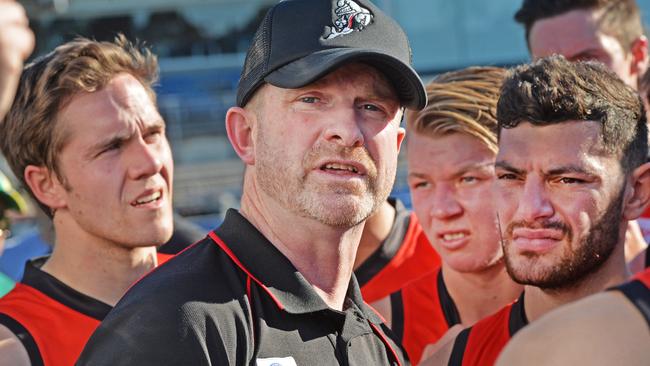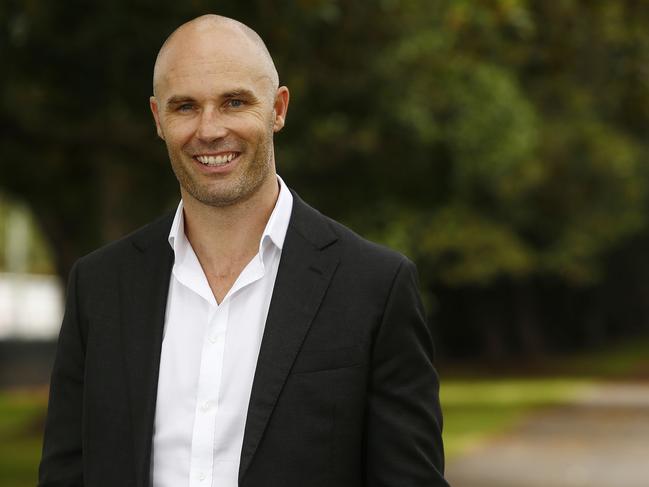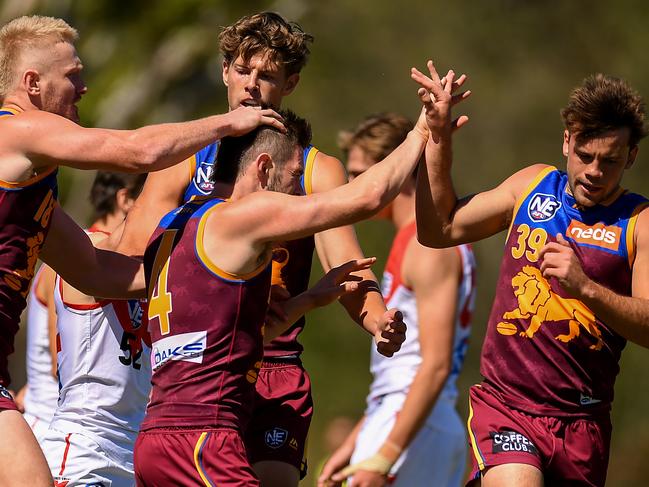Name change poser as VFL expands to take in interstate clubs
As teams from Queensland and NSW take their place in the VFL, the AFL must decide to keep the name of the league or embrace a title that reflects an interstate competition.

Victorian Football
Don't miss out on the headlines from Victorian Football. Followed categories will be added to My News.
Another step towards the revamp of the VFL will be taken today with clubs having until the close of business to submit their official applications to join the competition.
But as the deadline looms the name of the league is subject to speculation.
Documents sent to clubs by the AFL refer to the “VFL/East Coast second tier competition’’ as a “working title’’.
All NEAFL clubs – its AFL affiliates Brisbane, Gold Coast, Sydney and Greater Western Sydney, as well as Aspley, Redlands, Southport, Canberra Demons and Sydney University – were absorbed into the Victorian state league in August.
The Demons have already withdrawn and Sydney University is 50-50 as it assesses the costs.
Aspley and Redlands are also weighing up issues including finances, the travel component and list requirements.
NEAFL officials contacted this week said the name of the league was an issue for the AFL to tackle.
They said it made no sense for it to remain the Victorian Football League if it was taking in clubs from Queensland and NSW.

“It can’t be called the VFL, can it? Not if it’s got the Brisbane Lions or the Sydney Swans playing in it,’’ one former league official said.
“We all know tradition is so critical, but there’s also the practicalities of it. If you want to have the VFL don’t have teams from outside Victoria.’’
He said the original VFL changed its name to the AFL to reflect it had become a national competition.
Swans chief executive Tom Harley raised the issue last month.
“The VFL is an iconic and storeyed competition,” Harley told Fairfax Media.
“I think it is important that the heritage of that competition is retained, however with the inevitable inclusion of teams outside Victoria playing in a newly formatted competition, the name should rightly reflect that – very similar to what occurred when the AFL was formed.”
In a note to their members last week, Coburg president Matt Price and general manager Sebastian Spagnuolo made reference to a possible name change.
“By mid-October 2020 the competition will have taken greater shape with the knowledge of the name of the competition, which teams will be competing, how many teams, the new rules and regulations for the competition, travel requirements for clubs and more important information that will help all clubs plan for a fantastic 2021 season,’’ they said.
Victorian clubs are mindful that the AFL had said 2021 would be a “transition year’’ for the VFL. Some believe it would be pointless and even damaging to change the name if Queensland and NSW clubs were going to be in the competition only in the short-term.

The VFA was rebranded the VFL in 1996, and the name was retained when the competition took in the AFL reserves in 2000.
Meanwhile the league could have more than 20 teams next year as clubs from three states weigh up their options.
Northern and southern conferences are a possibility as the AFL looks to keep travel and accommodation costs in check.
Sydney University football operations manager Wayne Campbell told Leader his club was “interested, certainly’’ in joining the competition “but we have to tick the money box, which we need a bit more time to do’’.
Uni did lodge an initial expression of interest.
“We’re not saying we’re in and we’re not saying we’re out at this stage,’’ Campbell said.
As part of the changes the Victorian clubs have been given proposed zones and list requirements for next year.
For a list of 40, the stand-alone clubs will have to contract 20 players under the age of 23, and 10 must be under the age of 21.
Aligned and AFL clubs will be permitted to list five players over the age of 23.
Five will have to be under the age of 23, and 20 other players under 21, sourced from zones that each club has been allocated.
But primary-list players can come from anywhere.
The zones apply across the entire competition in Victoria and are intended to promote and strengthen greater linkages between the NAB League and the VFL, as the VFL clubs had suggested in a submission to AFL state leagues manager Tristan Salter four months ago.
The AFL has been contacted for comment.

